Make it Fast
Using Modern Brower APIs to Monitor and Improve the Performance of your Web Applications
nic jansma | nicj.net | @nicj

Who Am I?
Nic Jansma

- SOASTA (current)
- Microsoft (2005-2011)
- Founding member of W3C WebPerf Working Group
State of Performance Measurement
How do we measure performance?
Server
- HTTP logs (apache, nginx, haproxy)
- Server monitoring (top, iostat, vmstat, cacti, mrtg, nagios, new relic)
- Profiling (timestamps, xdebug, xhprof)
- Load testing (ab, jmeter, soasta, blazemeter, loadrunner)
Developer
- Browser developer tools (ie, chrome, ff, opera, safari)
- Network monitoring (fiddler, wireshark, tcpdump)
But...
- Measuring performance from the server and developer perspective is not the full story
- The only thing that really matters is what your end-user sees
- Measuring real-world performance of your end-users is tough
User
(circa 2010)
var elapsedTime = Date.now() - startTime;- Boomerang: github.com/lognormal/boomerang
W3C WebPerf Working Group
Founded 2010 to give developers the ability to assess and understand performance characteristics of their web apps
The mission of the Web Performance Working Group is to provide methods to measure aspects of application performance of user agent features and APIs
Microsoft, Google, Mozilla, Opera, Facebook, Netflix, etc
Working Group Goals
- Expose information that was not previously available
- Give developers the tools they need to make their applications more efficient
- Little to no overhead
- Easy to understand APIs
Published Specs
- Navigation Timing (NT): Page load timings
- Resource Timing (RT): Resource load timings
- User Timing (UT): Custom site events and measurements
- Performance Timeline: Access NT/RT/UT and future timings from one API
- High Resolution Time: Better
Date.now()
Published Specs (pt 2)
- Page Visibility: Visibility state of document
- Timing control for script-based animations:
requestAnimationFrame() - Efficient Script Yielding: More efficient than
setTimeout(...,0):setImmediate()
Upcoming Specs
- Beacon: Async send data (even after page is closed)
- Resource Hints:
rel="preconnect" rel="preload" - Resource Priorities:
lazyload - Frame Timing: Animation timings
- Navigation Error Logging: For failed navigations
Participate!
NavigationTiming
www.w3.org/TR/navigation-timing
Goal: Expose accurate performance metrics describing your visitor's page load experience
Current status: Recommendation
Upcoming: NavigationTiming2
How it was done before
(this isn't accurate)
<html><head><script>
var start = new Date().getTime();
function onLoad {
var pageLoadTime = (new Date().getTime()) - start;
}
body.addEventListener(“load”, onLoad, false);
</script>...</html>
What's wrong with this?
- It only measures the time from when the HTML gets parsed to when the last sub-resource is downloaded
- It misses the initial DNS lookup, TCP connection and HTTP request wait time
Date().getTime()is not reliable
Interlude
DOMHighResTimeStamp
| Date | DOMHighResTimeStamp |
|
|---|---|---|
| Accessed Via | Date().getTime() |
performance.now() |
| Resolution | millisecond | sub-millisecond |
| Start | Unix epoch | navigationStart |
| Monotonically Non-decreasing | No | Yes |
| Affected by user's clock | Yes | No |
| Example | 1420147524606 |
3392.275999998674 |
NavigationTiming
window.performance.navigation
interface PerformanceNavigation {
const unsigned short TYPE_NAVIGATE = 0;
const unsigned short TYPE_RELOAD = 1;
const unsigned short TYPE_BACK_FORWARD = 2;
const unsigned short TYPE_RESERVED = 255;
readonly attribute unsigned short type;
readonly attribute unsigned short redirectCount;
};
NavigationTiming
window.performance.timing
interface PerformanceTiming {
readonly attribute unsigned long long navigationStart;
readonly attribute unsigned long long unloadEventStart;
readonly attribute unsigned long long unloadEventEnd;
readonly attribute unsigned long long redirectStart;
readonly attribute unsigned long long redirectEnd;
readonly attribute unsigned long long fetchStart;
readonly attribute unsigned long long domainLookupStart;
readonly attribute unsigned long long domainLookupEnd;
readonly attribute unsigned long long connectStart;
readonly attribute unsigned long long connectEnd;
readonly attribute unsigned long long secureConnectionStart;
readonly attribute unsigned long long requestStart;
readonly attribute unsigned long long responseStart;
readonly attribute unsigned long long responseEnd;
readonly attribute unsigned long long domLoading;
readonly attribute unsigned long long domInteractive;
readonly attribute unsigned long long domContentLoadedEventStart;
readonly attribute unsigned long long domContentLoadedEventEnd;
readonly attribute unsigned long long domComplete;
readonly attribute unsigned long long loadEventStart;
readonly attribute unsigned long long loadEventEnd;
};
NavigationTiming
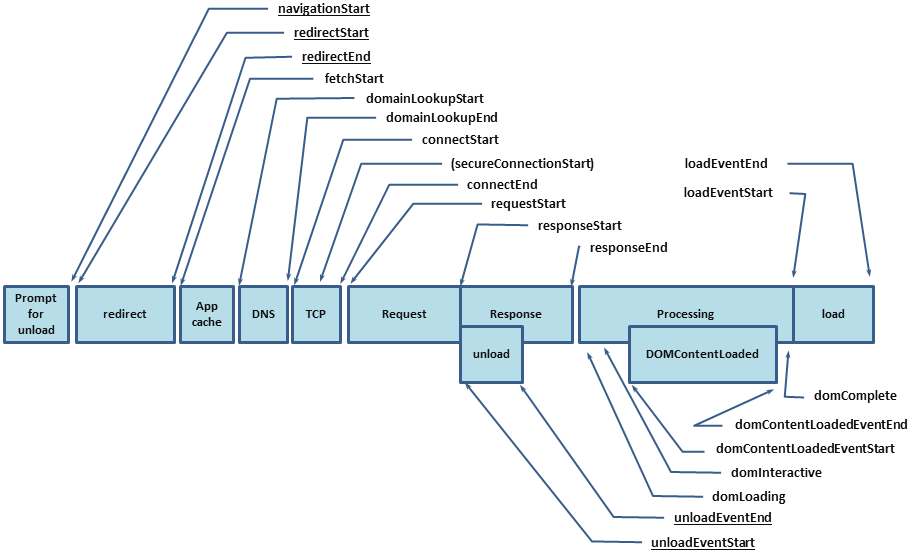
How to Use
function onLoad() {
if ('performance' in window && 'timing' in window.performance) {
setTimeout(function() {
var t = window.performance.timing;
var ntData = {
redirect: t.redirectEnd - t.redirectStart,
dns: t.domainLookupEnd - t.domainLookupStart,
connect: t.connectEnd - t.connectStart,
ssl: t.secureConnectionStart ? (t.connectEnd - secureConnectionStart) : 0,
request: t.responseStart - t.requestStart,
response: t.responseEnd - t.responseStart,
dom: t.loadEventStart - t.responseEnd,
total: t.loadEventEnd - t.navigationStart
};
}, 0);
}
}
Then what?
DIY / Open Source
- Send this data to your backend for logging
- Show any page's timings via a bookmarklet: kaaes.github.io/timing
- Boomerang: github.com/lognormal/boomerang
- Boomcatch: cruft.io/posts/introducing-boomcatch
- BoomerangExpress: github.com/andreas-marschke/boomerang-express
- SiteSpeed.io: www.sitespeed.io
- Piwik: github.com/piwik/piwik
kaaes timing

Boomerang
github.com/lognormal/boomerang
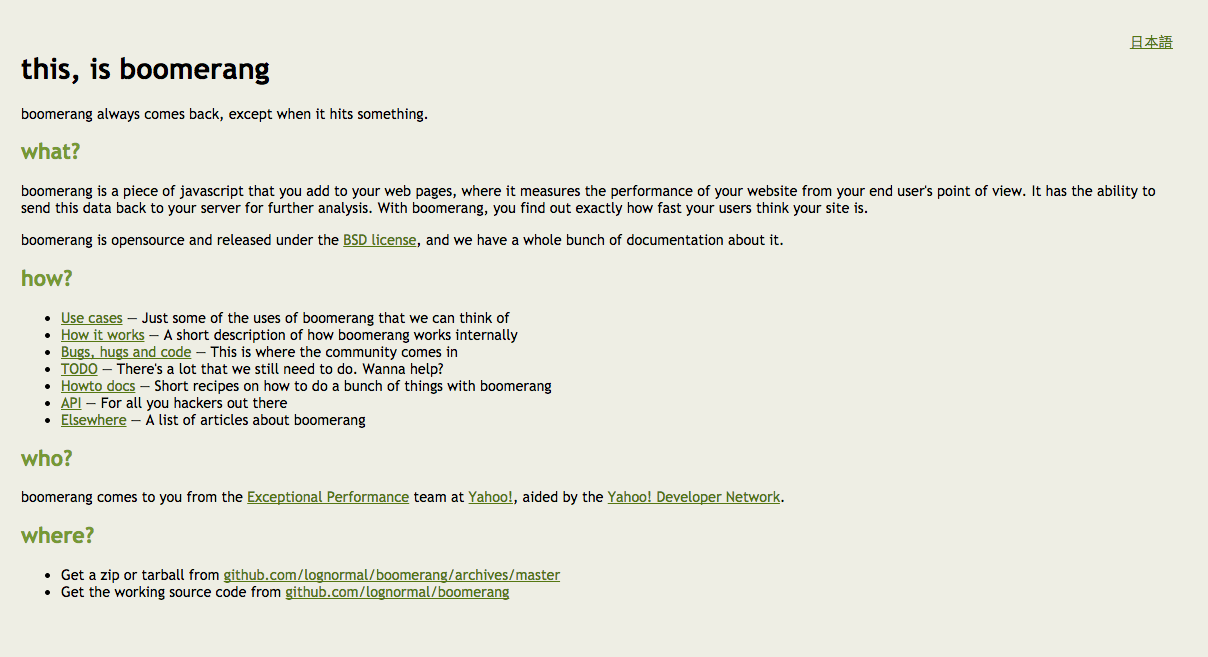
Boomcatch
Collects beacons + maps (statsd) + forwards (extensible)
cruft.io/posts/introducing-boomcatch
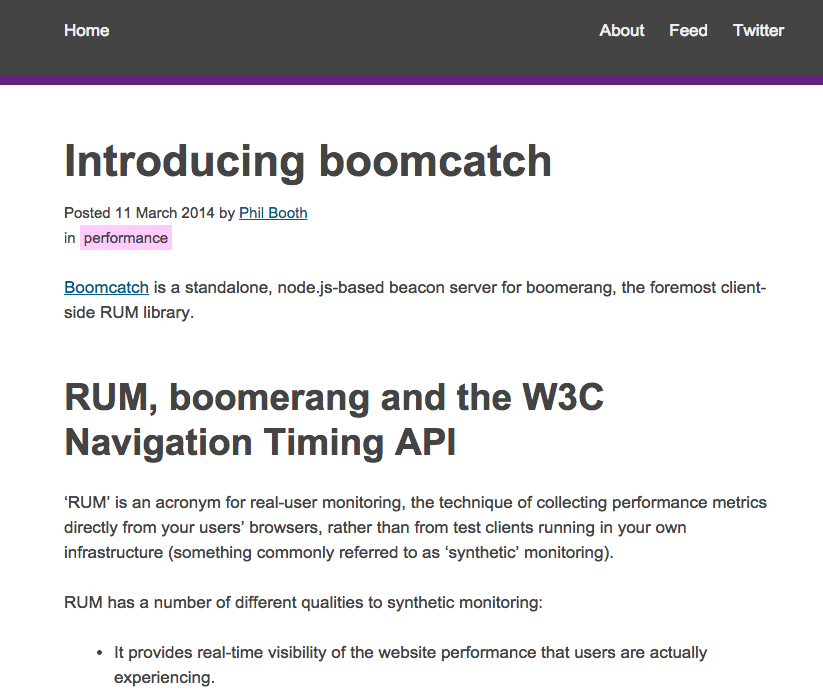
BoomerangExpress
Collects beacons
github.com/andreas-marschke/boomerang-express
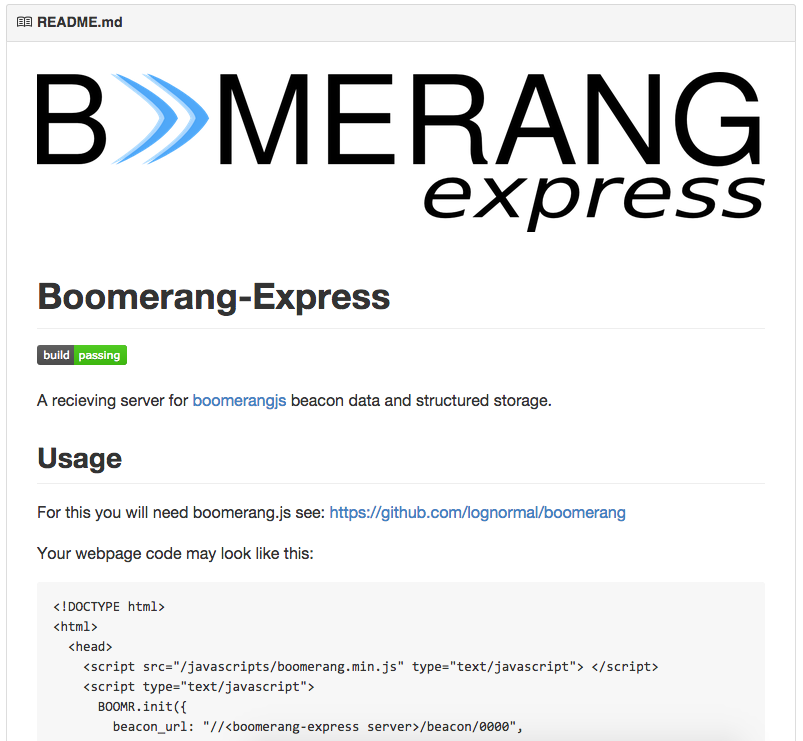
SiteSpeed.io
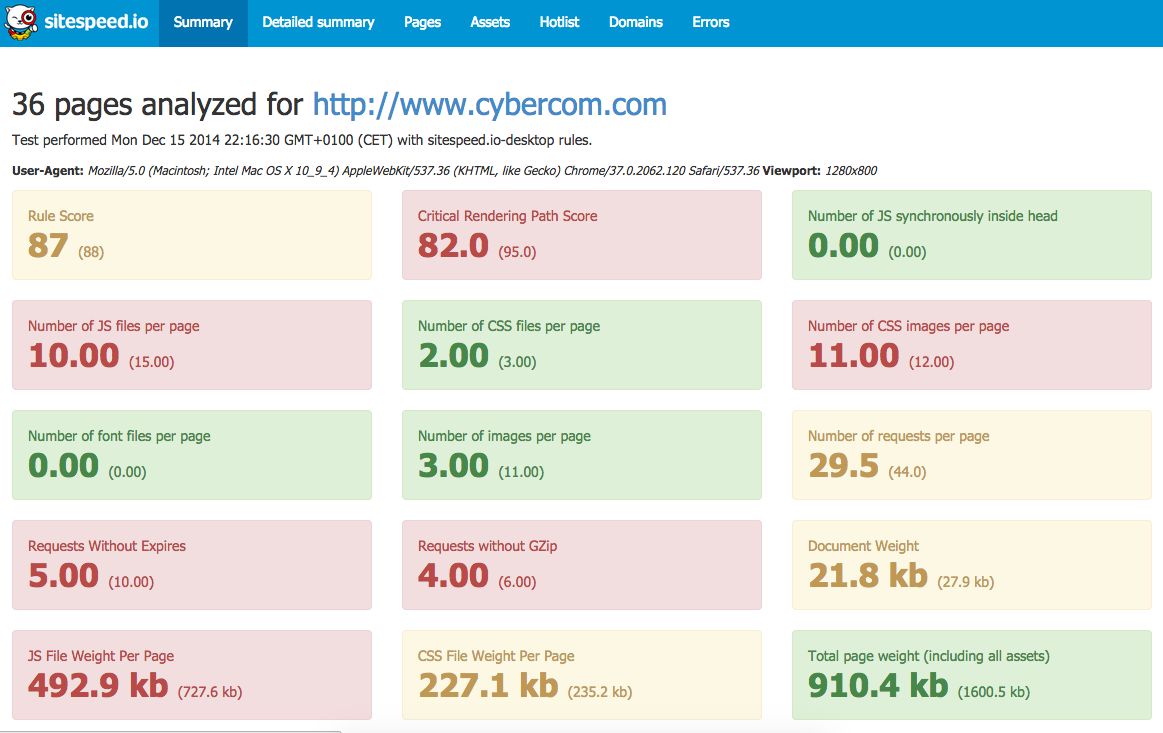
Piwik
"generation time" = responseEnd - requestStart
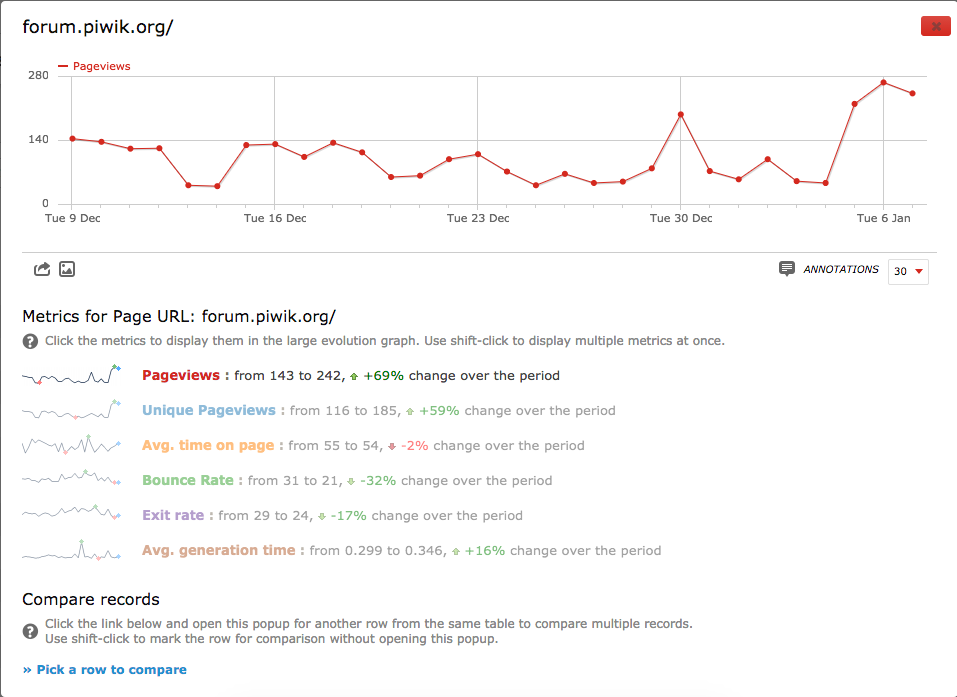
Commercial
- SOASTA mPulse: soasta.com
- Google Analytics Site Speed: google.com/analytics
- New Relic Browser: newrelic.com/browser-monitoring
- NeuStar WPM: neustar.biz
- SpeedCurve: speedcurve.com
SOASTA mPulse
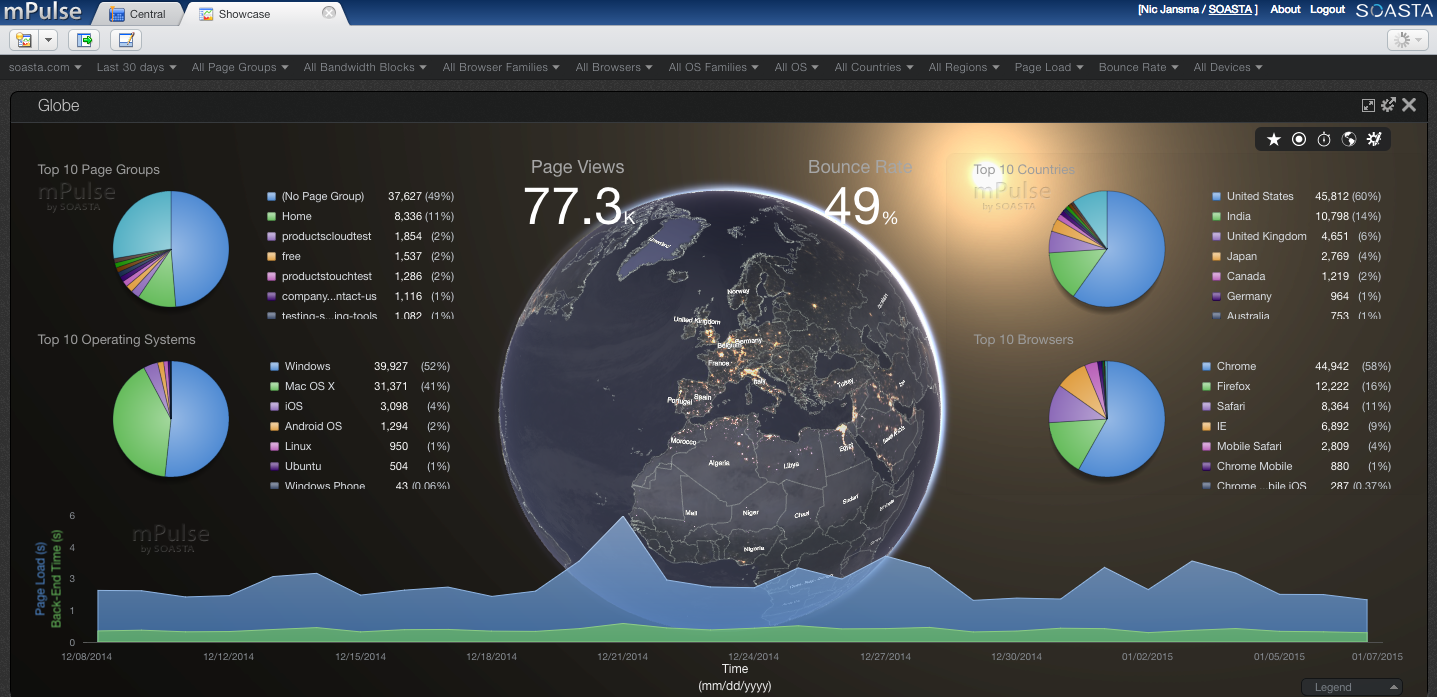
Google Analytics Site Speed

New Relic Browser
newrelic.com/browser-monitoring
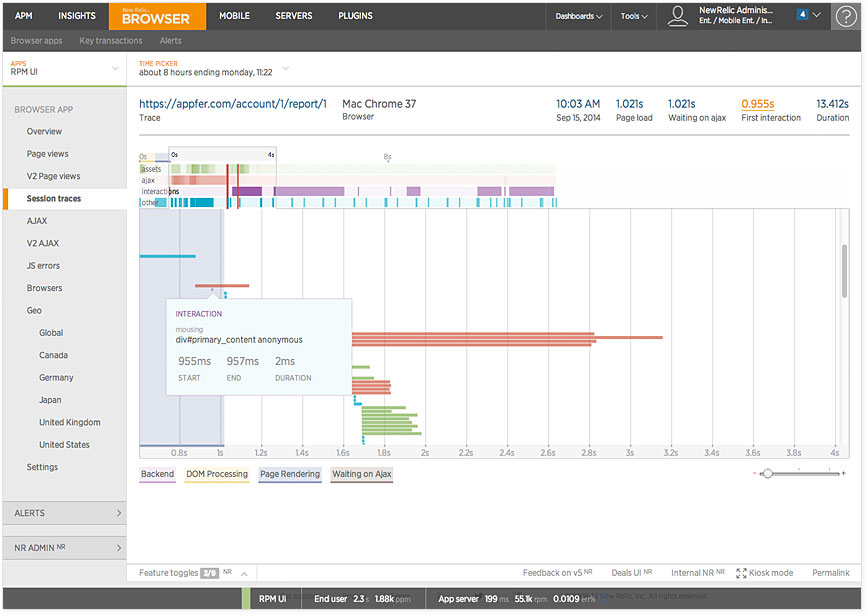
NeuStar WPM
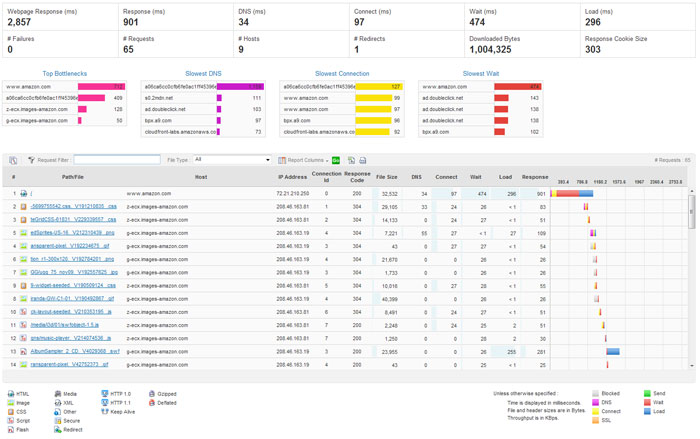
SpeedCurve
Runs on top of WebPageTest
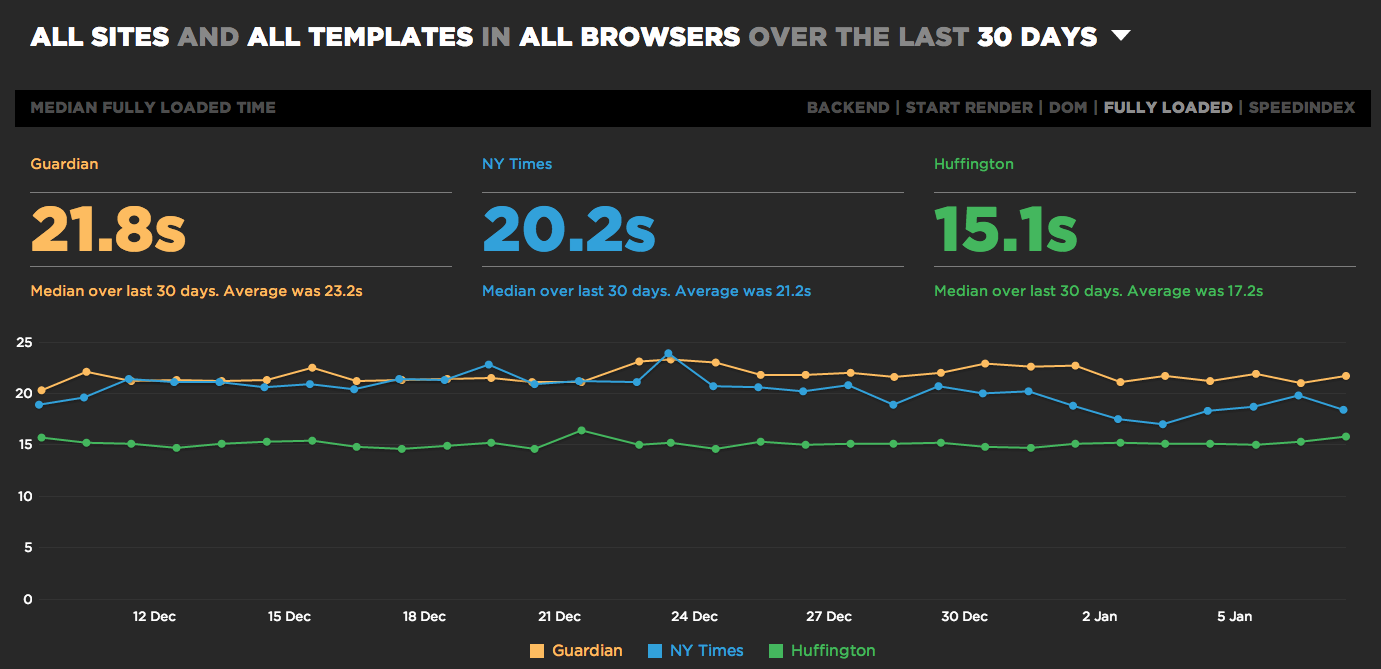
NavigationTiming
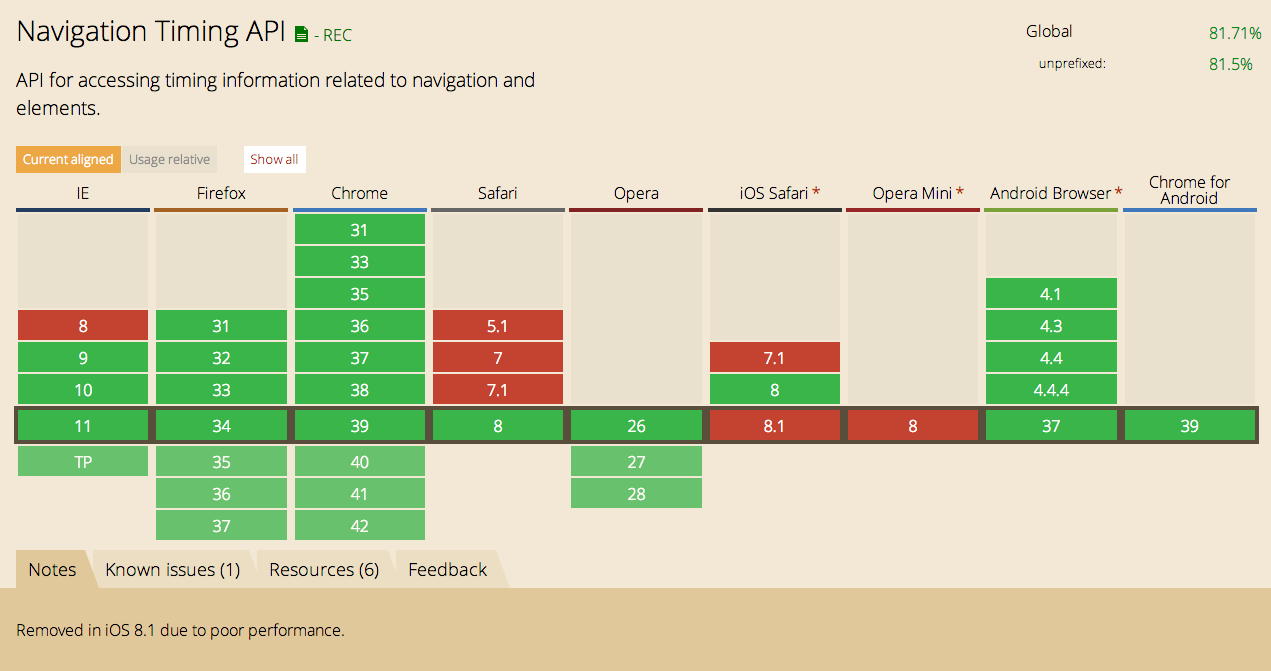
Tips
- Use
fetchStartinstead ofnavigationStartunless you're interested in redirects, tab init time, etc loadEventEndwill be 0 until after the body'sloadevent has finished (so you can't measure it in theloadevent)- We don't have an accurate way to measure the "request time", as "
requestEnd" is invisible to us (the server sees it) secureConnectionStartisn't available in IE
Tips

Tips (pt 2)
- iOS still doesn't have support
- Home page scenarios: Timestamps up through
responseEndevent may be 0 duration because some browsers speculatively pre-fetch home pages (and don't report the correct timings) - If possible, do any beaconing of the data as soon as possible. Browser
onbeforeunloadisn't 100% reliable for sending data - Single-Page Apps: You'll need a different solution for "navigations" (Boomerang + plugin coming soon)
NavigationTiming2
www.w3.org/TR/navigation-timing-2
DRAFT
Builds on NavigationTiming:
- Support for Performance Timeline
- Support for High Resolution Time
- timing information for link negotiation
- timing information for prerender
ResourceTiming
Goal: Expose sub-resource performance metrics
Current status: Working Draft
Inspiration
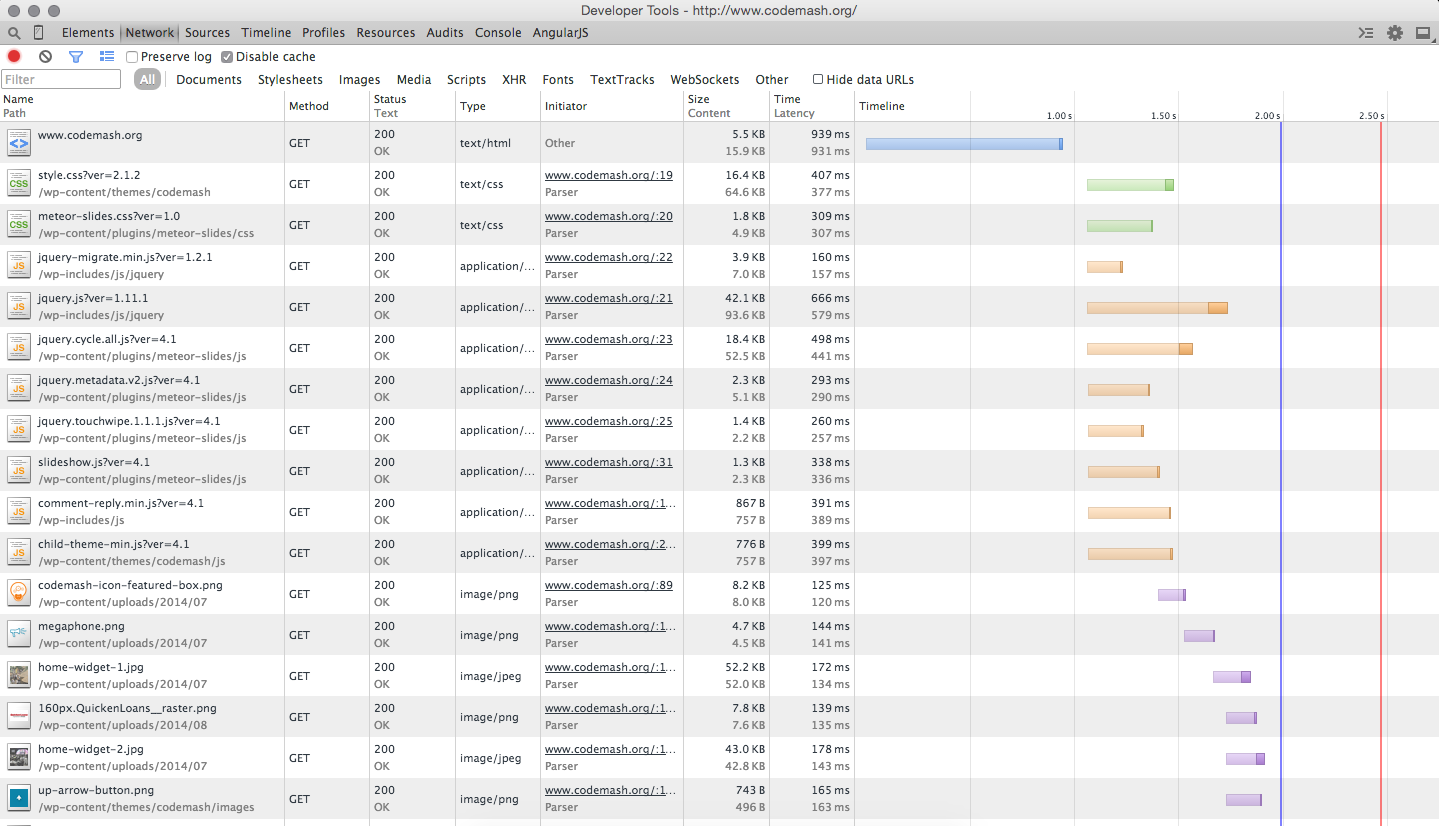
How it was done before
For dynamically inserted content, you could time how long it took from DOM insertion to the element’s onLoad event
How it was done before
(this isn't practical for all content)
var start = new Date().getTime();
var image1 = new Image();
var resourceTiming = function() {
var now = new Date().getTime();
var latency = now - start;
alert("End to end resource fetch: " + latency);
};
image1.onload = resourceTiming;
image1.src = 'http://www.w3.org/Icons/w3c_main.png';
What's wrong with this?
- It measures end-to-end download time plus rendering time
- Not practical if you want to measure every resource on the page (IMG, SCRIPT, LINK rel="css", etc)
Date().getTime()is not reliable
ResourceTiming
window.performance.getEntries()
interface PerformanceEntry {
readonly attribute DOMString name;
readonly attribute DOMString entryType;
readonly attribute DOMHighResTimeStamp startTime;
readonly attribute DOMHighResTimeStamp duration;
};
interface PerformanceResourceTiming : PerformanceEntry {
readonly attribute DOMString initiatorType;
readonly attribute DOMHighResTimeStamp redirectStart;
readonly attribute DOMHighResTimeStamp redirectEnd;
readonly attribute DOMHighResTimeStamp fetchStart;
readonly attribute DOMHighResTimeStamp domainLookupStart;
readonly attribute DOMHighResTimeStamp domainLookupEnd;
readonly attribute DOMHighResTimeStamp connectStart;
readonly attribute DOMHighResTimeStamp connectEnd;
readonly attribute DOMHighResTimeStamp secureConnectionStart;
readonly attribute DOMHighResTimeStamp requestStart;
readonly attribute DOMHighResTimeStamp responseStart;
readonly attribute DOMHighResTimeStamp responseEnd;
};
Interlude: PerformanceTimeline
www.w3.org/TR/performance-timeline
Goal: Unifying interface to access and retrieve performance metrics
Current status: Recommendation
PerformanceTimeline
window.performance
getEntries(): Gets all entries in the timelinegetEntriesByType(type): Gets all entries of the specified type (egresource,mark,measure)getEntriesByName(name): Gets all entries with the specified name (eg URL or mark name)
ResourceTiming
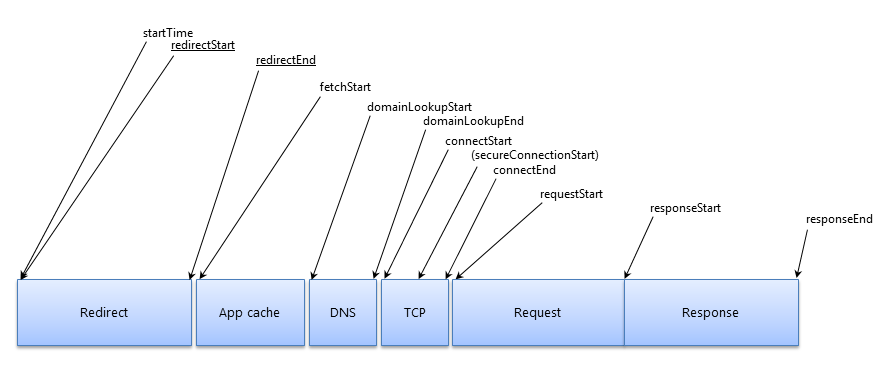
How to Use
window.performance.getEntriesByType("resource")[0]
{
connectEnd: 566.357000003336,
connectStart: 566.357000003336,
domainLookupEnd: 566.357000003336,
domainLookupStart: 566.357000003336,
duration: 4.275999992387369,
entryType: "resource",
fetchStart: 566.357000003336,
initiatorType: "img",
name: "https://www.foo.com/foo.png",
redirectEnd: 0,
redirectStart: 0,
requestStart: 568.4959999925923,
responseEnd: 570.6329999957234,
responseStart: 569.4220000004862,
secureConnectionStart: 0,
startTime: 566.357000003336
}
initiatorType
localName of that element:
imglinkscriptcss:url(),@importxmlhttprequest
Use Cases
- Send all resource timings to your backend analytics
- Raise an analytics event if any resource takes over X seconds to download (and trend this data)
- Watch specific resources (eg third-party ads or analytics) and complain if they are slow
Buffer
- There is a ResourceTiming buffer (per IFRAME) that stops filling after its size limit is reached (default: 150 entries)
- Listen for the
onresourcetimingbufferfullevent setResourceTimingBufferSize(n)andclearResourceTimings()can be used to modify it- Don't just:
setResourceTimingBufferSize(99999999)as this can lead to browser memory growing unbound
Compressing
- Each resource is ~ 500 bytes
JSON.stringify()'d - HTTP Archive tells us there's 99 HTTP resources on average, per page, with an average URL length of 85 bytes
- That means you could expect around 45 KB of ResourceTiming data per page load
- Compress it: nicj.net/compressing-resourcetiming
Compressing
Converts:
{
"responseEnd":323.1100000002698,
"responseStart":300.5000000000000,
"requestStart":252.68599999981234,
"secureConnectionStart":0,
"connectEnd":0,
"connectStart":0,
"domainLookupEnd":0,
"domainLookupStart":0,
"fetchStart":252.68599999981234,
"redirectEnd":0,
"redirectStart":0,
"duration":71.42400000045745,
"startTime":252.68599999981234,
"entryType":"resource",
"initiatorType":"script",
"name":"http://foo.com/js/foo.js"
}
Compressing
To:
{
"http://": {
"foo.com/": {
"js/foo.js": "370,1z,1c",
"css/foo.css": "48c,5k,14"
},
"moo.com/moo.gif": "312,34,56"
}
}
Overall, compresses ResourceTiming data down to 15% of its original size
Timing-Allow-Origin
- By default, cross-origin resources expose timestamps for only the
fetchStartandresponseEndattributes - This is to protect your privacy (attacker can’t load random URLs to see where you’ve been)
- Override by setting
Timing-Allow-Originheader Timing-Allow-Origin = "Timing-Allow-Origin" ":" origin-list-or-null | "*"- If you have a CDN, use this
- Note: Third-party libraries (ads, analytics, etc) must set this on their servers. 5% do according to HTTP Archive. Google, Facebook, Disqus, mPulse, etc.
Blocking Time
- Browsers will open a limited number of connections to each unique origin (protocol/server name/port)
- If there are more resources than the # of connections, the later resources will be "blocking", waiting for their turn to download
durationincludes Blocking time!- So in general, don't use
duration, but this is all you get with cross-origin resources.
Blocking Time
Calculate:
var waitTime = 0;
if (res.connectEnd && res.connectEnd === res.fetchStart)
{
waitTime = res.requestStart - res.connectEnd;
}
else if (res.domainLookupStart)
{
waitTime = res.domainLookupStart - res.fetchStart;
}
DIY / Open Source
- Compress + send this data to your backend for logging
- Show any page's resources via a bookmarklet: github.com/andydavies/waterfall
- Heatmap bookmarklet / Chrome extension: github.com/zeman/perfmap
- Nurun's Performance Bookmarklet: github.com/nurun/performance-bookmarklet
- Boomerang supports ResourceTiming: github.com/lognormal/boomerang
Andy Davies' Waterfall.js
github.com/andydavies/waterfall
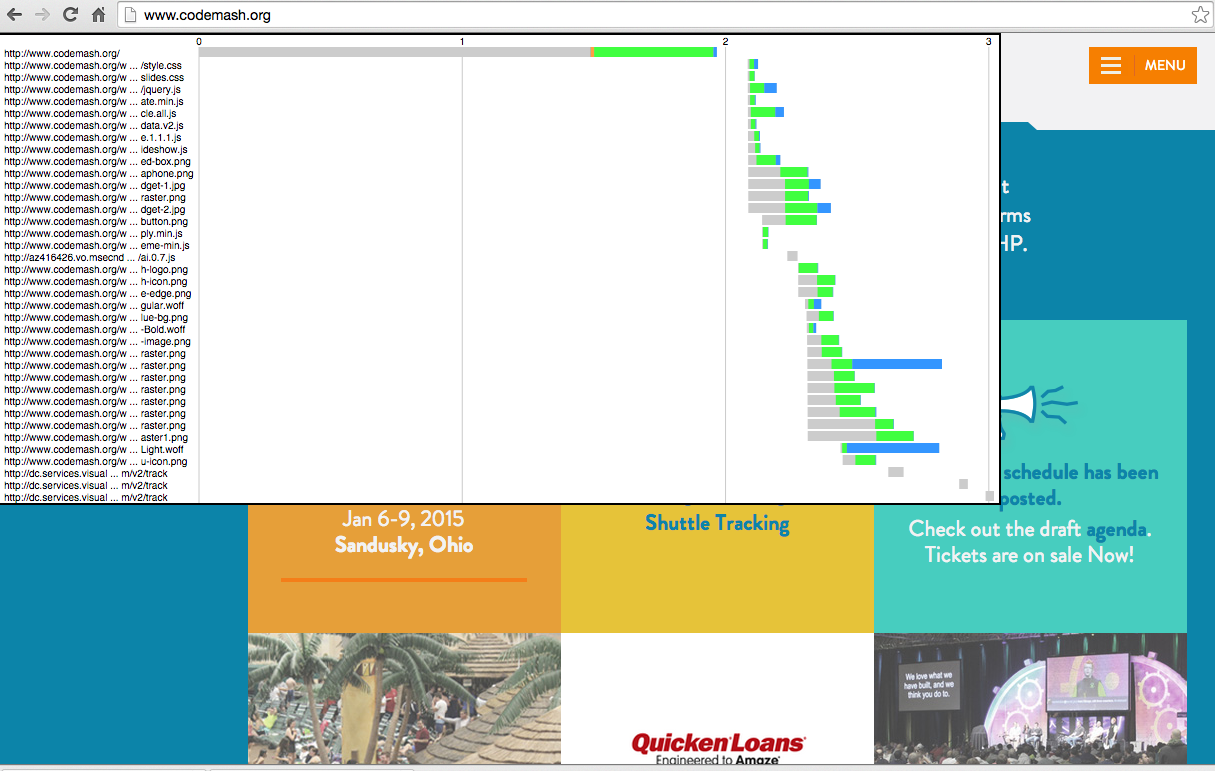
Mark Zeman's PerfMap
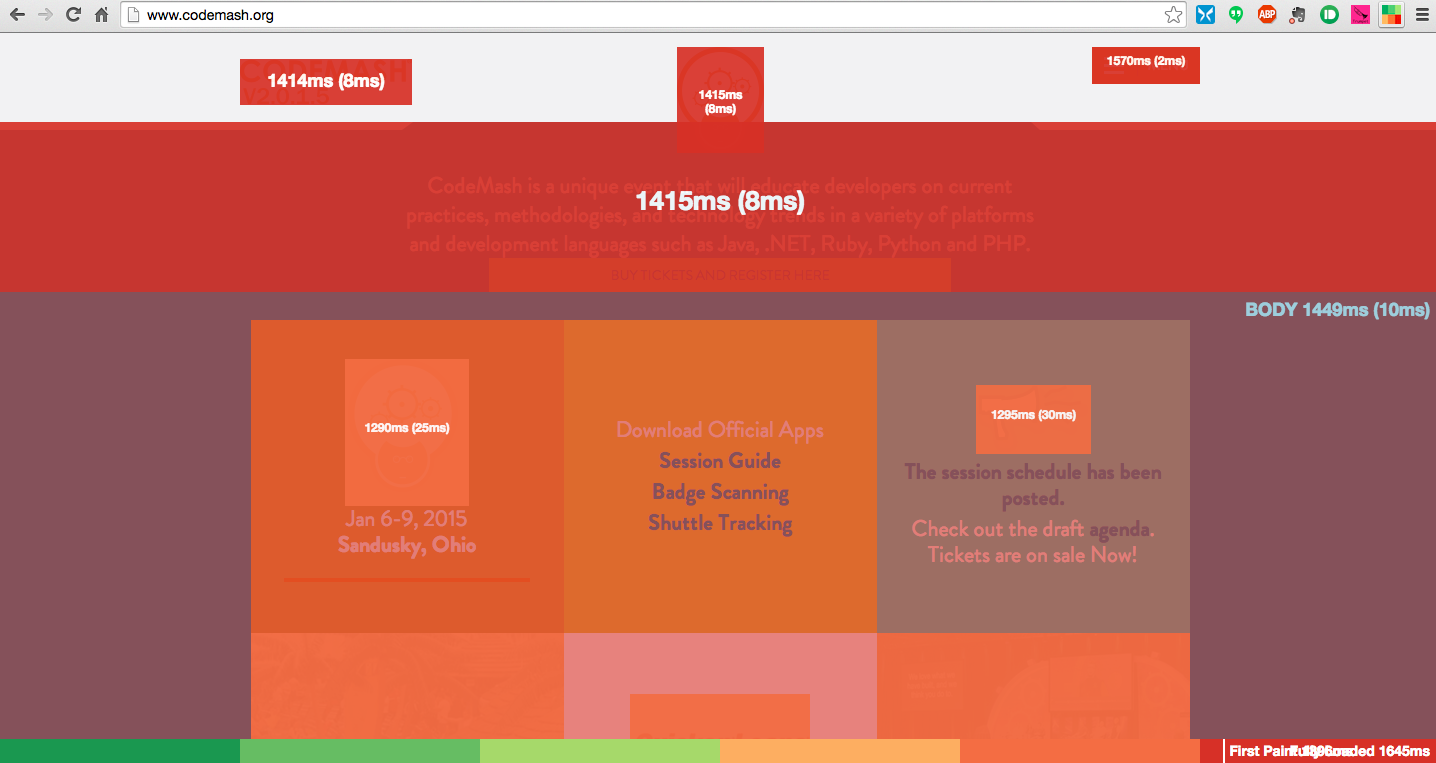
Nurun's Performance Bookmarklet
github.com/nurun/performance-bookmarklet
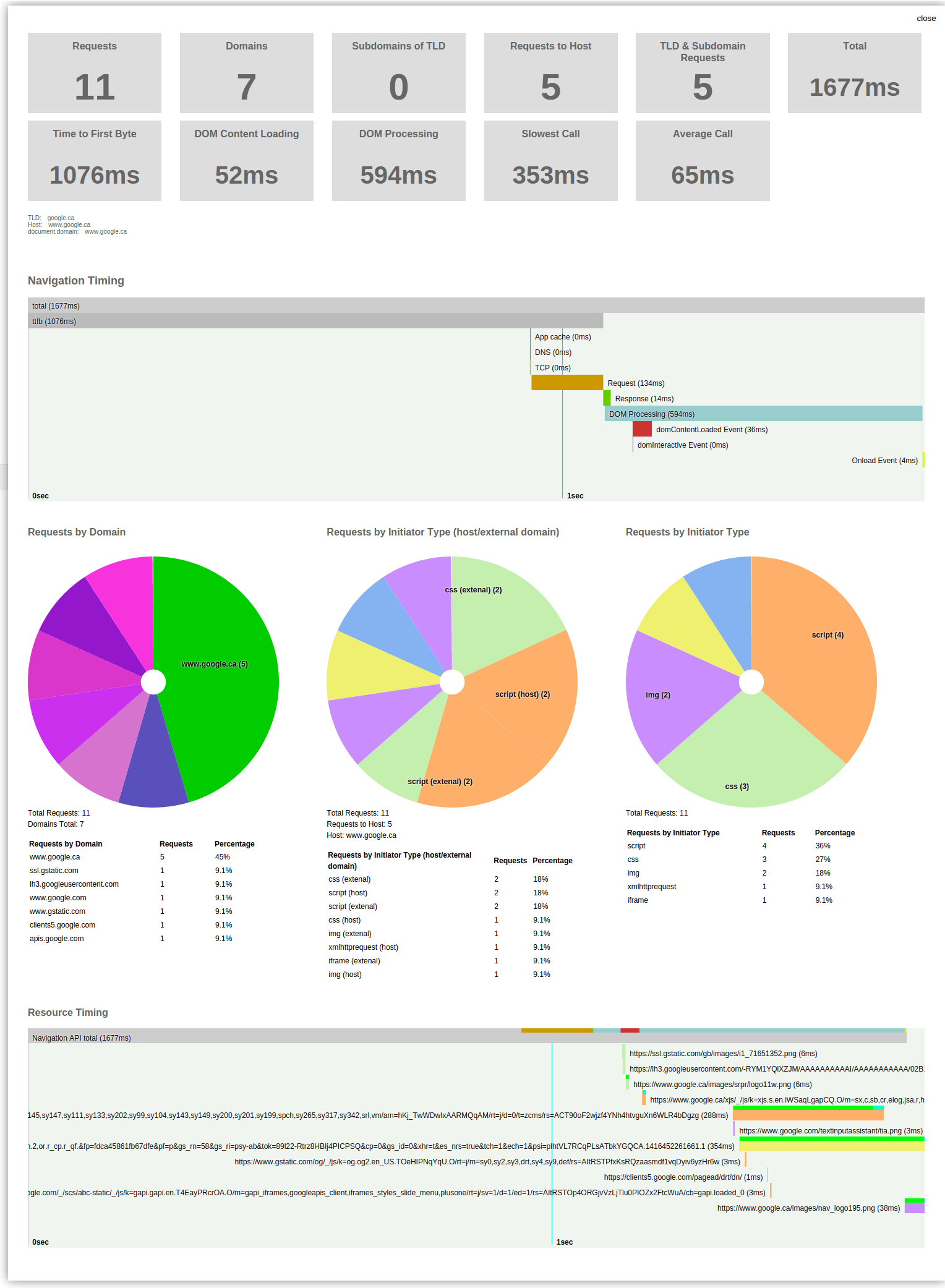
Commercial
- SOASTA mPulse: soasta.com
- New Relic Browser: newrelic.com
- App Dynamics Web EUEM: appdynamics.com
SOASTA mPulse
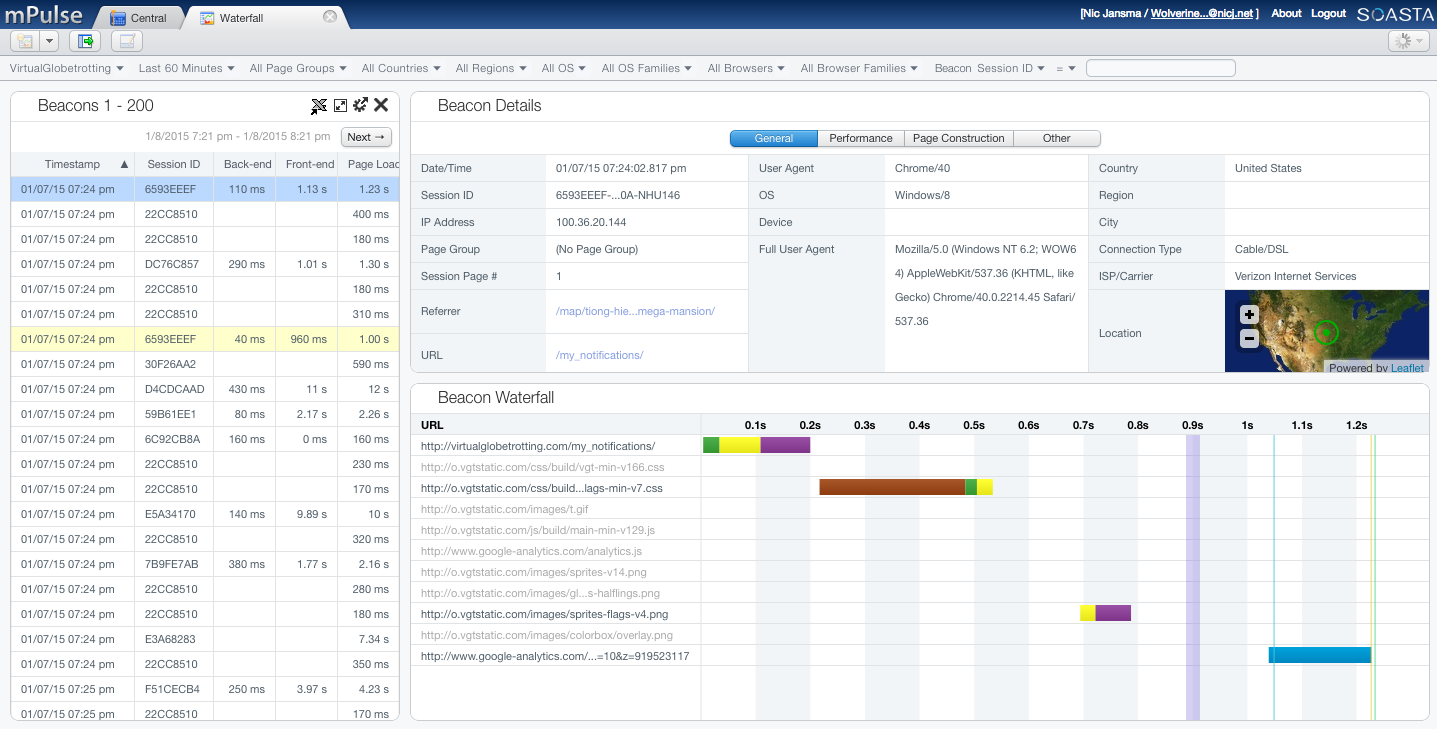
New Relic Browser
newrelic.com/browser-monitoring
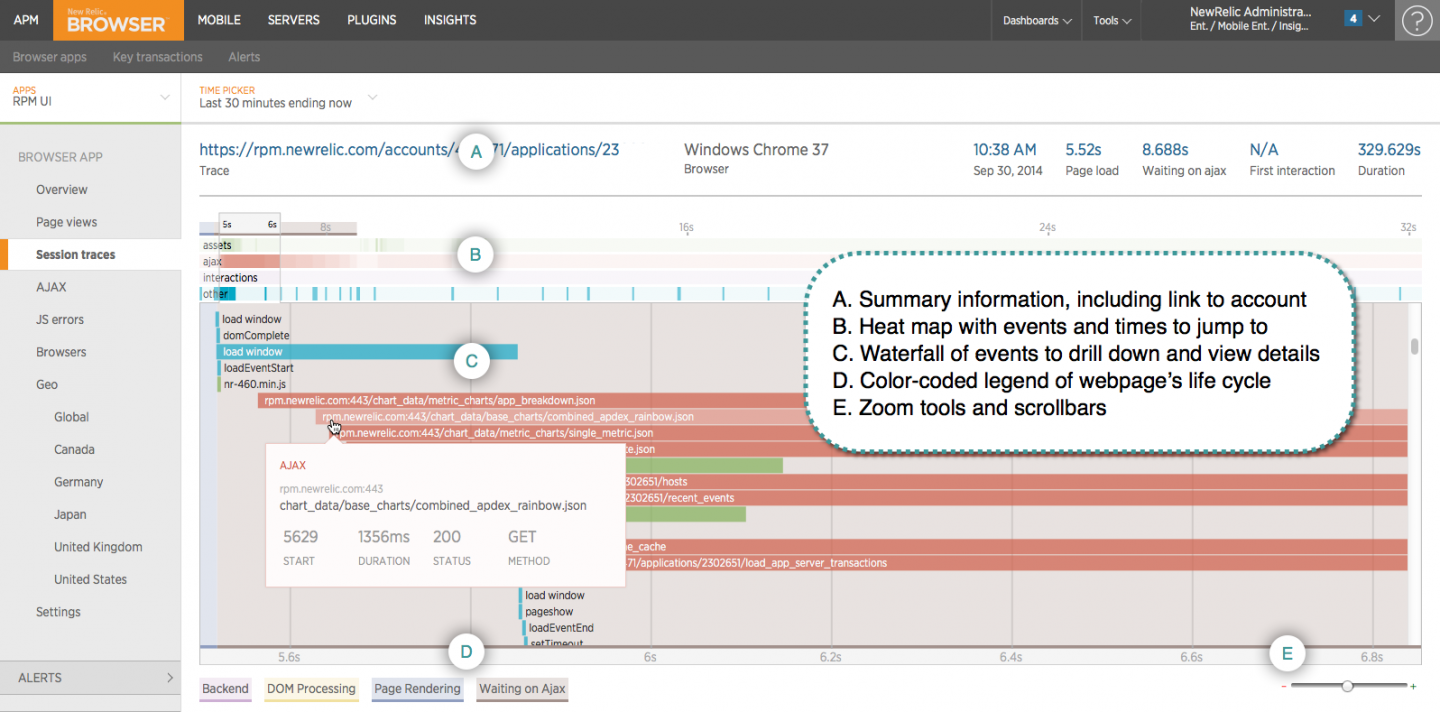
App Dynamics Web EUEM
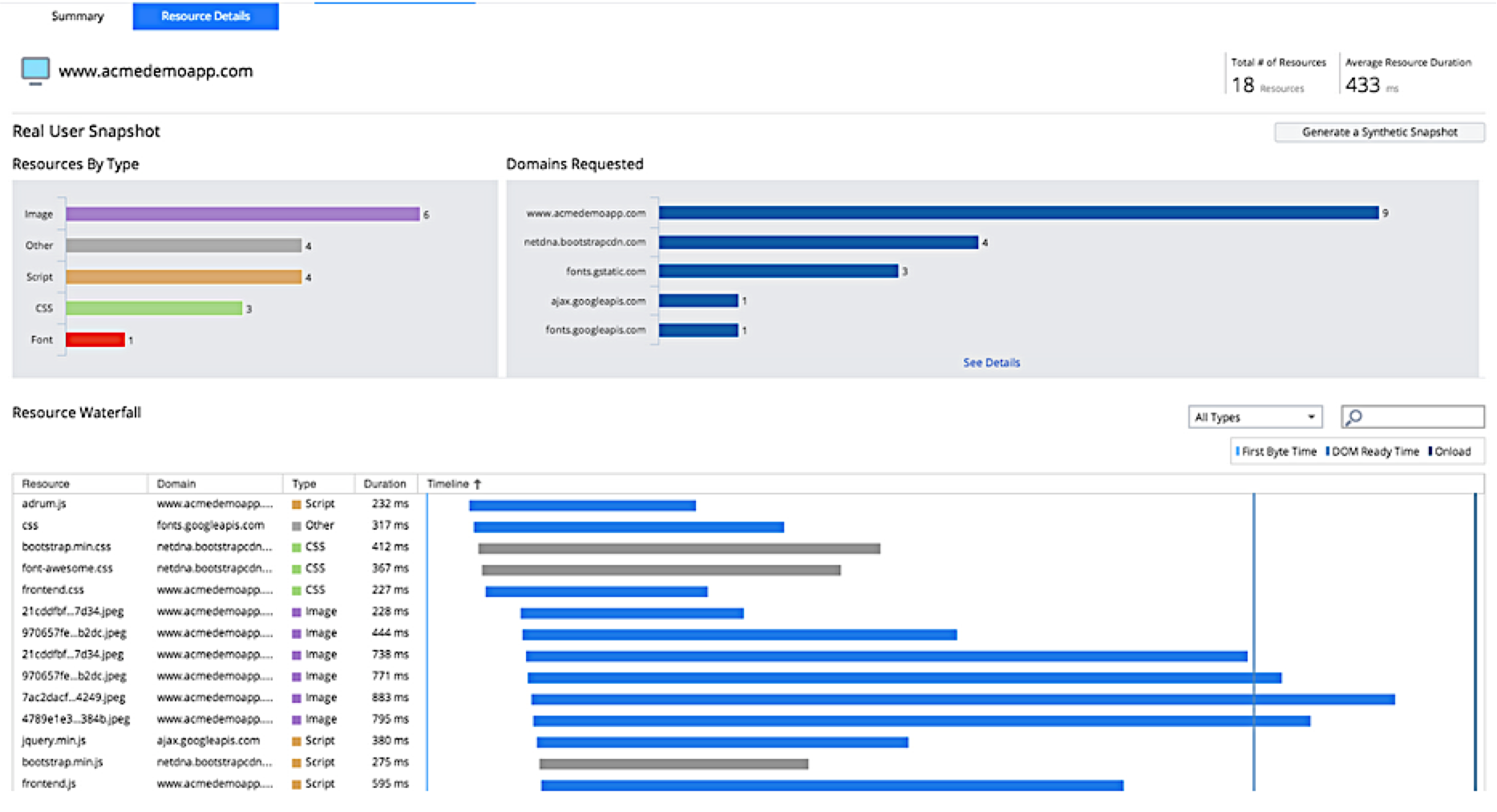
ResourceTiming
caniuse.com/#feat=resource-timing
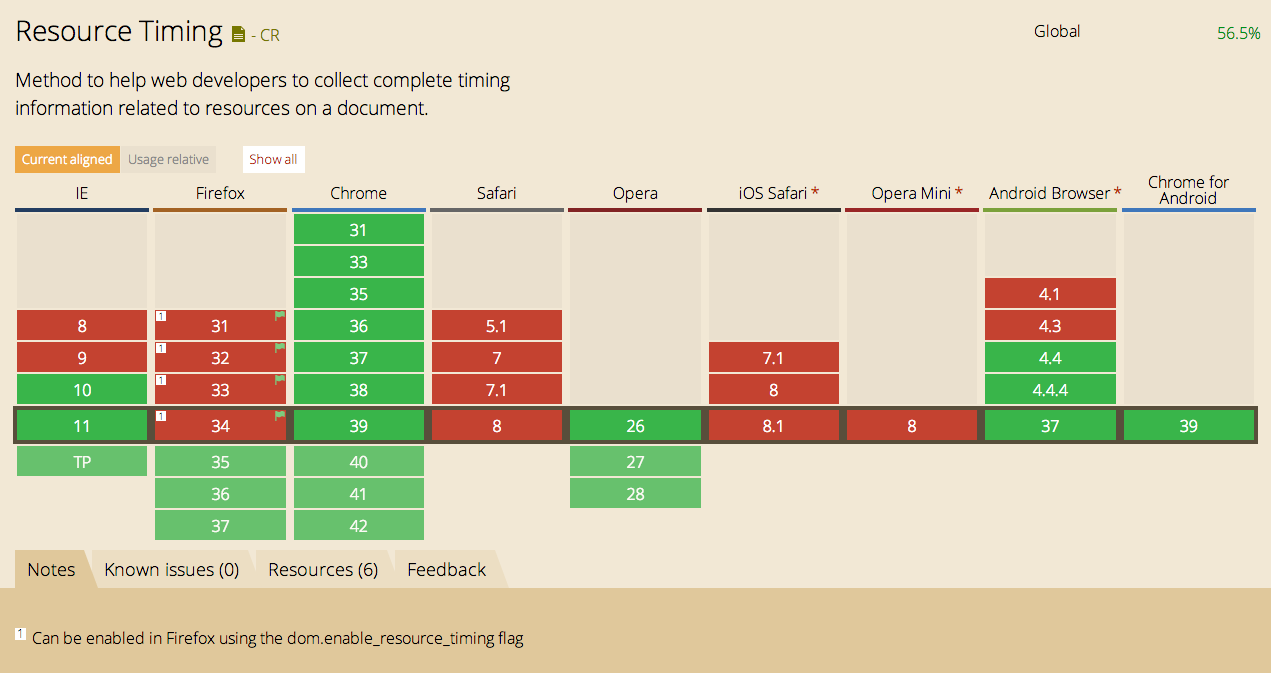
Tips
- For many sites, most of your content will not be same-origin, so ensure all of your
CDNs and third-party libraries send
Timing-Allow-Origin - What isn't included in ResourceTiming:
- The root HTML page (get this from
window.performance.timing) - Transfer size or content size (privacy concerns)
- HTTP code (privacy concerns)
- Content that loaded with errors (eg 404s)
- The root HTML page (get this from
Tips (pt 2)
- If you're going to be managing the ResourceTiming buffer, make sure no other scripts are managing it as well
- The
durationattribute includes Blocking time (when a resource is behind other resources on the same socket) - Each
IFRAMEwill have its own ResourceTiming data, and those resources won't be included in the parent FRAME/document. So you'll need to traverse the document frames to get all resources. See github.com/nicjansma/resourcetiming-compression.js for an example about:blank,javascript:URLs will be seen in RT data
UserTiming
Goal: Standardized interface to note timestamps ("marks") and durations ("measures")
Current status: Recommendation
How it was done before
var start = new Date().getTime();
// do stuff
var now = new Date().getTime();
var duration = now - start;
What's wrong with this?
- Nothing really, but...
Date().getTime()is not reliable- We can do better!
UserTiming
window.performance
partial interface Performance {
void mark(DOMString markName);
void clearMarks(optional DOMString markName);
void measure(DOMString measureName, optional DOMString startMark,
optional DOMString endMark);
void clearMeasures(optional DOMString measureName);
};
How to Use - Mark
// mark
performance.mark("start");
performance.mark("end");
performance.mark("another");
performance.mark("another");
performance.mark("another");
How to Use - Mark
// retrieve
performance.getEntriesByType("mark");
[
{
"duration":0,
"startTime":150384.48100000096,
"entryType":"mark",
"name":"start"
},
{
"duration":0,
"startTime":150600.5250000013,
"entryType":"mark",
"name":"end"
},
...
]
How to Use - Measure
// measure
performance.mark("start");
// do work
performance.mark("start2");
// measure from "now" to the "start" mark
performance.measure("time to do stuff", "start");
// measure from "start2" to the "start" mark
performance.measure("time from start to start2", "start", "start2");
How to Use - Measure
// retrieval - specific
performance.getEntriesByName("time from start to start2", "measure");
[
{
"duration":4809.890999997151,
"startTime":145287.66500000347,
"entryType":"measure",
"name":"time from start to start2"
}
]
Benefits
- Uses the
PerformanceTimeline, somarksandmeasuresare in the PerformanceTimeline along with other events - Uses
DOMHighResTimestampinstead ofDateso sub-millisecond, monotonically non-decreasing, etc - More efficient, as the native browser runtime can do math quicker and store things more performantly than your JavaScript runtime can
Use Cases
- Easy way to add profiling events to your application
- Note important scenario durations in your Performance Timeline
- Measure important durations for analytics
- Browser tools are starting to add support for showing these
UserTiming
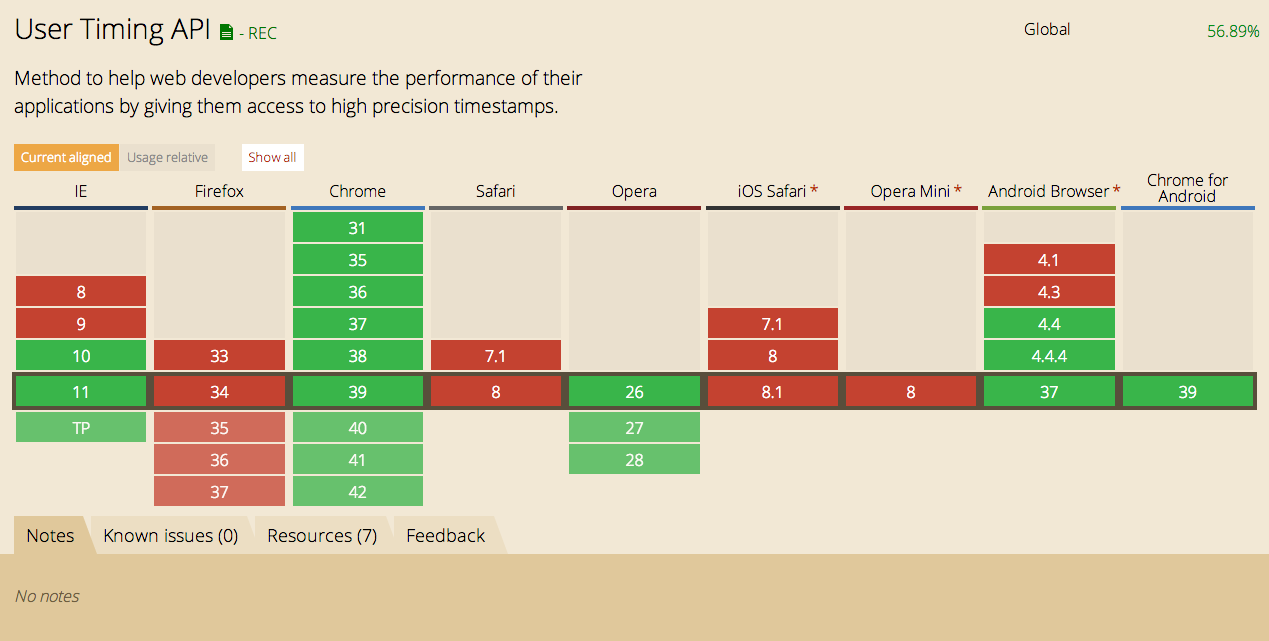
UserTiming.js
- Polyfill that adds UserTiming support to browsers that do not natively support it.
- UserTiming is accessed via the PerformanceTimeline, and requires window.performance.now() support, so UserTiming.js adds a limited version of these interfaces if the browser does not support them
- github.com/nicjansma/usertiming.js
DIY / Open Source
- Compress + send this data to your backend for logging
- WebPageTest sends UserTiming to Google Analytics, Boomerang and SOASTA mPulse
Commercial
- SOASTA mPulse: soasta.com
- WebPageTest: webpagetest.org
Tips
_trackTiming(...))Your Job
Make it fast!
Links
- Presentation: slideshare.net/nicjansma
- Code: github.com/nicjansma/talks